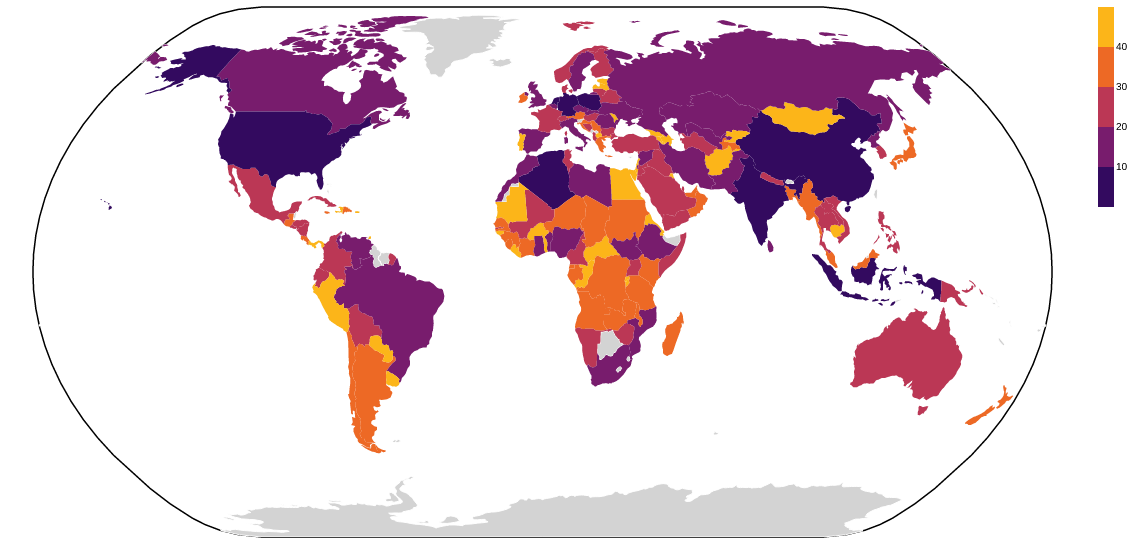The capital concentration coefficient
How much “stuff” is in a country’s “capital”?
On a recent trip to Berlin, which I visited in large part because of the archaeological museums there, I found myself a little disappointed. A lot of the country’s cool stuff seemed to be in other cities, like Dresden, Frankfurt, or Munich.
And so I began some very idle speculation into a concept I call the capital correlation coefficient (CCC). As a tourist, the CCC would tell you how much of the “stuff” in the country you can experience if you visit only one city. As a citizen, there’s a potentially interesting network effect: if there’s really only one “good” city in your country, that’s where all the coolest and most interesting things and people will be, where “interesting” means arts, business, whatever.
A quick clarification: by “capital” I mean the leading city, which is not necessarily the legal capital. For example, the US’s “capital” in this sense is New York City, not Washington, DC. Other examples are Canada (Toronto not Ottawa), Australia (Sydney not Canberra), Brazil (Sao Paulo not Brasilia), and Turkey (Istanbul not Ankara).
As a first pass, I’ll use number of people as a proxy for amount of “interesting stuff,” and look at what percent of each country’s urban population lives in that country’s most populous city.

These data1 already reveal some of the patterns I expected:
United States. Unsurprisingly, the US scores low: a relatively small proportion of Americans live in New York City. The Los Angeles metro is about two-thirds the size of New York City, so even though New York is the largest metro area by a good margin, there is definitely no sense that New York “has all the stuff” or “is the only place” (unless you are a New Yorker).
Germany. Berlin is the largest city proper in Germany, with almost double the population of Hamburg proper. However, the Rhine/Ruhr metro region is about double the size of the Berlin metro region, and the Frankfurt metro has about the same population as the Berlin metro.
France makes an interesting pairing to Germany. The Paris metro is six times more populous than the second most populous metro (Lyon). I expect this is a result of France’s long history of centralization: France has been an integrated country since the medieval period, and Paris has been accumulating power, money, and stuff for about 800 years. Berlin, by contrast, took off only in the past 200 or 300 years: the Prussians made Berlin their capital in the 1700s, then in the 1800s the Prussians unified Germany, such the Industrial Revolution caused Berlin in particular to boom.
Japan. The Tokyo metro has twice the number of people as the next competitor (Osaka). But Tokyo and Kyoto are both the top destinations for tourists, which suggests to me that Kyoto has a disproportionate share of the interesting “stuff.”
In general, total population is anticorrelated with this concentration. China and India clearly stand out on the big end. The United States and Indonesia are the points closest to China and India, with large, unconcentrated populations. Germany and the Netherlands have notably small concentrations, while Egypt is exceptionally concentrated (with Cairo being more than triple the size of Alexandria).2

Population alone surely doesn’t tell the whole story. A lot of Japan’s interesting stuff is in Kyoto; I expect a lot of Russia’s interesting stuff is in St. Petersburg. The UK appears to have a relatively low concentration, but the London metro is five times the size of the Manchester metro, and I’m doubtful that Manchester can compete with London for cultural “stuff.”
Some other proxies might include more economics, like GDP by metro area, and cultural metrics, like education. For example, in the US, zero of our top 10 universities are in our top two metros; you need to go to our third city (Chicago) to get a top 10 university. Compare this against, say, Turkey, where three of the top 10 universities are in Istanbul and four are in Ankara.
I certainly love the idea of living in a highly concentrated country, where there wouldn’t be a trade-off between the most interesting jobs (for me, that’s Washington or Boston) against where the best arts and food are (New York City and Los Angeles). Presumably you could run into both of Iceland’s prime minister and its top pop singer on the streets of Reykjavik.
These data need to be taken with a big grain of salt. Different countries define “urban” and “city” differently, so some comparisons might be apples and oranges. In general it seems that “city” is interpreted as metro region.
There are clearly some threshold effects here. Geographically small countries and countries with small populations are more likely to have a single metro. For example, a city-state like Singapore is necessarily at 100% concentration. Mongolia and Iceland, two countries with very low population density, just don’t have enough people to make multiple metros. Australia also has very low population density, but that’s because it’s basically two populated countries with a blank space in between.

